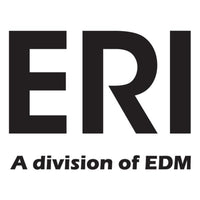The 3D and 4D ultrasound devices market is experiencing remarkable growth, fueled by advancements in imaging technology, increasing demand for detailed prenatal care, and improvements in healthcare infrastructure.
According to Data Bridge Market Research, the market, valued at USD 7.28 billion in 2022, is projected to surge to USD 35.97 billion by 2030, with a compound annual growth rate (CAGR) of 3.98% from 2023 to 2030. This growth is driven by both stationary and portable ultrasound devices, along with a rising prevalence of chronic diseases and an increasing need for advanced imaging technologies.
Key Growth Drivers
Technological advancements, increasing demand for advanced imaging, and government support are key drivers fueling growth in the 3D and 4D ultrasound market. Innovations such as enhanced image resolution, improved processing capabilities, and the development of portable handheld devices have transformed medical imaging. The introduction of real-time dynamic 3D imaging in 4D ultrasound has revolutionized fields like prenatal care, offering highly detailed visualization of fetal development. Additionally, advanced imaging technologies are being widely adopted across cardiology, urology, and orthopedics, where real-time, high-resolution imaging is essential for precise diagnostics.
The growing demand for advanced imaging solutions, especially in prenatal care, underscores the value of 3D and 4D technologies, which provide more comprehensive insights compared to traditional 2D methods. This demand is not limited to prenatal care; accurate, real-time imaging is crucial for effective diagnostics across various medical specialties.
Furthermore, government initiatives focused on expanding healthcare infrastructure, particularly in developing countries, are bolstering the adoption of advanced ultrasound devices. Many of these initiatives include funding and subsidies to ensure state-of-the-art technologies reach underserved areas. Coupled with rising healthcare expenditures globally, medical facilities are increasingly investing in cutting-edge imaging equipment. The expansion of telemedicine and remote monitoring has also created a strong demand for portable ultrasound systems, which can be used in diverse settings such as emergency care and virtual consultations.
As populations grow and communities expand, local engagement becomes an important aspect of market visibility. For example, Christina Cerda, a registered sonographer and 4D ultrasound business owner, has mentioned understanding population growth trends and participating in community events or business groups can enhance connectivity and open up new market opportunities, especially in rapidly developing areas.
Market Opportunities
Christina has recognized major opportunities in the 3D/4D ultrasound market, particularly in the area of diagnostic services within elective ultrasound practices. She noted:"At present, one of the most significant opportunities in the 3D/4D ultrasound sector lies in offering diagnostic services within elective ultrasound practices. This could be a promising avenue for growth, enabling practitioners to enhance their role in their communities. While elective ultrasound fosters emotional bonding, diagnostic ultrasound plays a critical role in supporting individuals on their health journey."
She also emphasized the potential to expand ultrasound services by incorporating complementary offerings:"I've observed that studios offering a range of services—such as aesthetics, massage, and photography—alongside their ultrasound services are thriving. This integrated approach not only provides added value to clients but also fosters connections with other entrepreneurs, potentially expanding client bases and creating a more holistic service environment."
Cerda emphasized the importance of understanding local population trends. She suggested that:"Being mindful of population growth and community trends is crucial. For instance, if you are in a rapidly growing area, engaging with the community through volunteering or joining business groups can enhance your visibility and connectivity. This local involvement can be instrumental in leveraging market opportunities."
Regulatory Changes
On the regulatory side, recent changes are making it easier for healthcare providers to adopt these cutting-edge technologies. Streamlined approval processes for medical devices and favorable reimbursement policies are encouraging the use of advanced ultrasound systems. Regulatory agencies are also beginning to prioritize the integration of AI and machine learning in medical imaging, which further supports the deployment of more sophisticated ultrasound devices. These shifts are not only fostering innovation but also helping healthcare facilities, from major hospitals to smaller clinics, to implement new technologies faster, ultimately contributing to the overall growth of the market.
Challenges
Despite the market’s promising growth, several challenges persist:
High Costs: Advanced 3D and 4D ultrasound devices are more expensive than traditional 2D models, which can be a barrier for smaller healthcare facilities and those in resource-limited areas.
Regulatory Barriers: Stringent regulatory requirements and approval processes can delay the introduction of new technologies and limit market access.
Lack of Skilled Professionals: Effective use of 3D and 4D ultrasound equipment requires specialized training, which can be a challenge in areas with a shortage of skilled practitioners.
Limited Accessibility: Infrastructure constraints and financial limitations in low-income countries can restrict access to advanced ultrasound technologies.
The 3D and 4D ultrasound devices market is poised for continued expansion, driven by technological advancements, increasing healthcare expenditure, and the rise of telemedicine. Christina Cerda’s insights highlight key opportunities for growth, particularly through the integration of diagnostic services in elective ultrasound practices and the expansion of service offerings. Addressing challenges such as high costs and regulatory hurdles will be essential for unlocking the market’s full potential and improving patient care across diverse settings.



